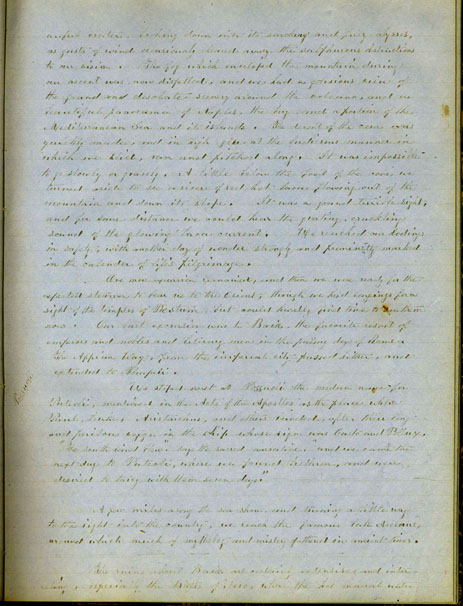Travel
Diary of Mrs. R.P. Eaton:
Europe,
Egypt, and Palestine, ca. 1857

One more excursion unnamed, and then we were ready for the expected steamer to hear us to the Orient, though we had longings for a sight of the temples of Prestum, but could barely find time to see tomorrow. Our last excursion was to Baia, the favorite resort of nobles and literary men in the sailing days of Rome. The Appian Way, from the imperial city passed hither, and extended to Pompeii.
We stopped next at Possuoli, the modern name for Puteoli, mentioned in the Acts of the Apostles as the place where Paul, Luke, Aristarchus, and others landed after their long and perilous voyage in the ship whose sign was Casto and Pollux. “The south wind blew” says the sacred narrative. “And we come the next day to Puteoli, where we found brethren, and were desired to tarry with their seven days.”
A few miles along the seashore, and turning a little way to the right – into the country, we reach the famous lake Averous, around which much of mythology and mystery fathered in ancient times.
The ruins about Baia are certainly extensive and interesting, especially by the Baths of Nero, where the hot mineral water